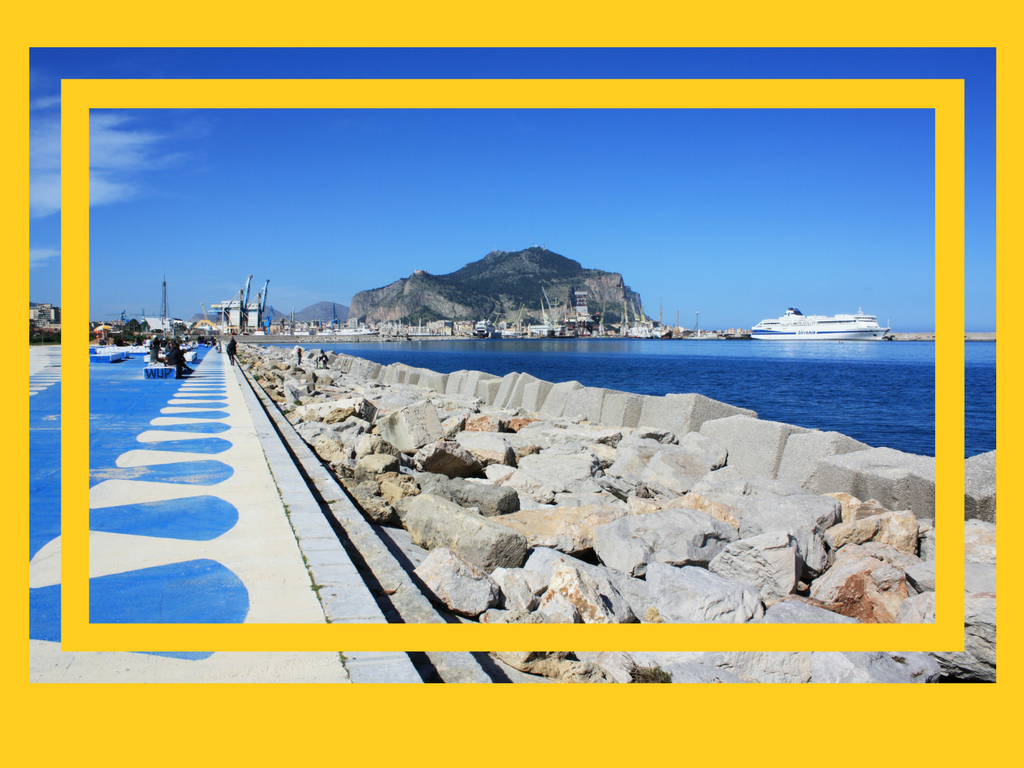It’s not easy to choose what to see in Palermo. In all its contraddictions, the regional capital of Sicily offers a unique blend of people, traditions and cultures. So, you can visit the Teatro Massimo in city centre or you can sunbathe at the beach of Mondello, but for sure you won’t get bored.
What to see in Palermo
There are a lot of places to see and to live in Palermo, but for sure you cannot miss the following 10 in random order.
1 . Palazzo dei Normanni / Cappella Palatina
The Palazzo dei Normanni, a Unesco World Heritage site, was the residence of the Kings during the Norman domination of Sicily. Today it is the seat of the Sicilian Regional Assembly. On the first floor of the building, there is the marvellous Cappella Palatina, the royal chapel of the Norman Kings of Sicily. It is famous for its mosaics.
Website: Fondazione Federico II
2. Teatro Massimo
Located in Piazza Verdi, in the heart of the city, the Teatro Massimo is the biggest theatre in Italy and the third in Europe. It was designed by the architect Giovanni Battista Filippo Basile, but, after his death, construction was overseen by his son, Ernesto. It was inaugurated on 16th of May 1897.
https://www.instagram.com/p/BgVmJI8Ax0w/?taken-by=teatromassimo
Website: Teatro Massimo
3. Catacombe dei Cappuccini
If you are not a little squeamish, I suggest you to visit the Catacombe dei Cappuccini, the burial catacombs. They are below the Capuchin monastery. In the 16th century the monks started excavating crypts to outgrow the original cemetery. The Catacombe contain about 8,000 corpses and 1,252 mummies. Today they are open to the public, but they are a bit macabre.
Website: Catacombe Palermo
4. Santuario di Santa Rosalia
Located on the top of Monte Pellegrino, the Santuario di Santa Rosalia is carved into the rocks. It’s dedicated to the patron saint of Palermo. Rosalia, from a noble norman family, retired to live as a hermit in the cave, where she died approximately between 1166 and 1170. In 1624, a plague beset Palermo. The 15th of July, the Saint appeared to a woman, Girolama La Gattusa, to whom she told where to find her remains. The following year, she appeared to a hunter who was going to commit suicide. She stopped him and told him to bring her bones to Palermo and have them carried in procession through the city. So, after three day of processions, the plague ceased and she was venerated as the saint patron of the city. The sanctuary was built in the cave where her bones were discovered.
Website: Santuario Santa Rosalia
5. La cattedrale
Palermo Cathedral, Unesco World Heritage site, is dedicated to the Assumption of th Virgin Mary. It has different styles because of additions and restorations over the time. Indeed, it was erected in 1185 but completed only in the 18th century. It contains the remains of two of Sicily’s greatest rulers: Roger II and Frederick II. It’s possibile to admire the fantastic view from the roofs.
Website: Cattedrale Palermo
6. Mondello
Mondello is the borough of Palermo located between Mount Gallo and Mount Pellegrino. It is famous for its beautiful beach. Originally, it was a small fishing village and it was home to a tonnara, no longer active. Therefore, at the beginning of the 20th century, Mondello became the seat of the aristocracy of Palermo. Today, besides the beach, it is renowed as one of the gems of Art Nouveau in Europe.
7. I mercati
You cannot say to have seen Palermo if you haven’t taken a walk through its street markets. Vuccirìa, Capo, Ballarò an Borgo Vecchio, the four historical street markets.They are a fascinating mix of tastes and smells, people and traditions. There you can find the real essence of the old city. You just have to walk and get lost among the stalls.
8. La Zisa
La Zisa, a Unesco World Heritage site, is a castle in the western part of Palermo. It was the summer residence of the norman king and it’s clearly inspired by moorish architecture. Inside, you can visit the great hall with a mosaic decoration. Finally, in the 1970s, the palace was acquired by the Region of Sicilia and restored. Today it is open to tourists.
https://www.instagram.com/p/Bh3TWZzH4CT/?tagged=zisa
9. Quattro Canti / Piazza Pretoria
In the heart of the historical centre of Palermo, you can see the Quattro Canti, a baroque square, at the crossing of two important streets, Via Maqueda and Corso Vittorio Emanuele. The square is octogonal and on the four sides there are four baroque buildings with fountains and statues. Some steps away, you can see Piazza Pretoria, also known as square of Shame, because at the center of the square there is the Fontana Pretoria, the fountain with sixteen nude statues of nymphs, humans, mermaids and satyrs, considered the representation of currupt minicipalities.
10. Santa Maria dello Spasimo
Santa Maria dello Spasimo is an uncompleted Catholic church in the borough of the Kalsa. Altough, the construction began in 1509, it was never completed because of the Turkish threat in 1535 when resources for the church were used to build fortification. Its most important feature is the lack of the roof. Today “lo Spasimo” hosts cultural and musical events.
https://www.instagram.com/p/Bhl40RRHx0t/?tagged=spasimo
So, if you liked this article and want to visit Palermo, contact me. I’ll be happy to help you.



